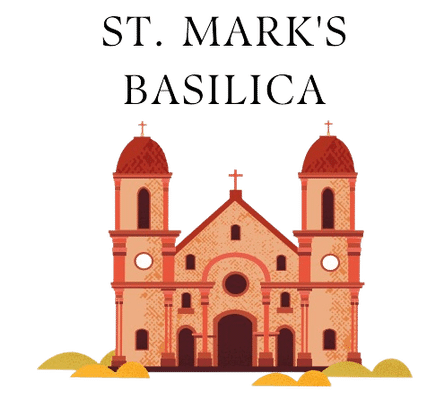About St. Mark’s Basilica Paintings
Paintings of St. Mark’s Basilica
The Pala d'Oro is an 11th-century altarpiece that is considered one of the most famous St. Mark's Basilica Paintings. It's an intricate work of Byzantine art that depicts scenes from the life of Jesus and the Virgin Mary, adorned with precious gems and gold.
The Triumph of Venice, painted by Paolo Veronese, is a masterpiece among St. Mark's Basilica Paintings. The ceiling painting depicts Venice as a powerful maritime city during the Renaissance period, with allegorical figures symbolizing the city's wealth and power.
The mosaics in St. Mark's Basilica adorn the walls and ceilings of St. Mark's Basilica and are some of the most beautiful St. Mark's Basilica Paintings. These intricate works of Byzantine art use millions of tiny glass tiles to depict scenes from the Bible and religious figures, showcasing the artistry and skill of the craftsmen who created them.
The Tintoretto Paintings, located in the sacristy of St. Mark's Basilica, are a series of stunning works created by the Venetian Renaissance painter Tintoretto. These St. Mark's Basilica Paintings depict scenes from the life of Christ, using dramatic lighting and perspective to create a sense of depth and movement.
The Gold Mosaic Altarpiece is a breathtaking work of St. Mark's Basilica Paintings, made up of gold and enamel tiles. It features intricate depictions of biblical scenes, including Christ's Crucifixion and Resurrection, and is a stunning example of Byzantine art.
The San Marco Polyptych is an important work among St. Mark's Basilica Paintings. Created by the Venetian Renaissance artist Gentile Bellini, it's an altarpiece that features depictions of various saints, including St. Mark himself, and is considered a masterpiece of Venetian Renaissance art.
History of St. Mark’s Basilica Paintings
The St. Mark's Basilica Paintings have a long and fascinating history, closely tied to the st mark's basilica history itself. The basilica was constructed in the 11th century to house the remains of Saint Mark, one of the four evangelists of the Christian faith. The building was designed in the Byzantine style, reflecting the influence of the Eastern Roman Empire on Venice.
Over the centuries, a series of mosaics, frescoes, and altarpieces were added to the interior of the basilica, many of them by the finest artists of their time. The majority of the works were produced during the Byzantine and Renaissance periods, with contributions from artists such as Tintoretto, Titian, and Bellini.
In the 16th century, much of the interior of the basilica was renovated in the Renaissance style, with new chapels and altars added. This included the creation of the famous Pala d'Oro, a gold and enamel altarpiece that is considered one of the greatest examples of Byzantine enamelwork in existence. In the centuries that followed, the artworks in St. Mark's Basilica were subject to damage from floods, fires, and even wars. However, many of the works have been restored and preserved, allowing visitors to appreciate their exceptional beauty and historical significance to this day.
FAQs
What is the best time to visit St. Mark's Basilica?
The best time to visit St. Mark's Basilica in Venice, Italy, is early in the morning or late in the evening. Arriving shortly after the basilica opens allows you to beat the crowds and enjoy the serene atmosphere while exploring the stunning Byzantine architecture and intricate mosaics in relative peace. Alternatively, visiting in the evening, especially during sunset, offers a magical ambiance with beautiful lighting and fewer tourists.
Who created the St. Mark's Basilica Paintings?
The artworks in St. Mark's Basilica were created by a number of artists over several centuries, including Tintoretto, Titian, and Bellini. The majority of the works were produced during the Byzantine and Renaissance periods.
What is the history of the St. Mark's Basilica?
The history of St. Mark's Basilica is rich that dates back to the 9th century. It was originally built to house the remains of St. Mark, which were brought from Alexandria. Over the centuries, the basilica underwent several renovations and expansions, blending Byzantine, Romanesque, and Gothic architectural styles. It served as the Doge's chapel, symbolizing Venice's wealth and power. The basilica's stunning mosaics, marble decorations, and iconic domes make it a masterpiece of Venetian art and architecture, attracting visitors from around the world.
What is the significance of the St. Mark's Basilica Paintings?
The artworks in St. Mark's Basilica are significant for their exceptional beauty, historical and religious significance, and cultural and artistic importance. They represent some of the finest examples of Byzantine and Renaissance art in the world.
Can visitors see the St. Mark's Basilica Paintings?
Yes, visitors to St. Mark's Basilica can see the paintings as part of their visit. However, certain areas of the basilica may be closed for restoration or conservation work at times.
How long does it take to see the St. Mark's Basilica Paintings?
The amount of time it takes to see the St. Mark's Basilica Paintings can vary depending on how much detail you want to take in. A guided tour or audio guide can help provide context and insights into the artworks.
Are there any restrictions on photography of the St. Mark's Basilica Paintings?
Photography is not permitted inside the basilica, including the areas where the St. Mark's Basilica Paintings are displayed. However, postcards and other reproductions of the artworks are available for purchase.

